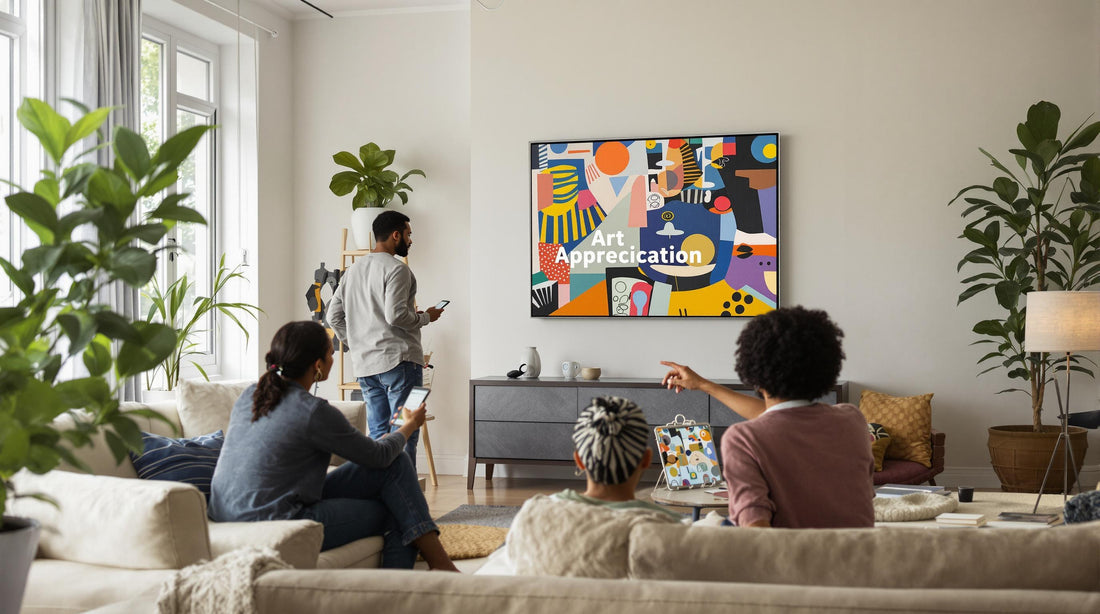
Art Appreciation Basics: A Guide for Collectors and Decorators 2025
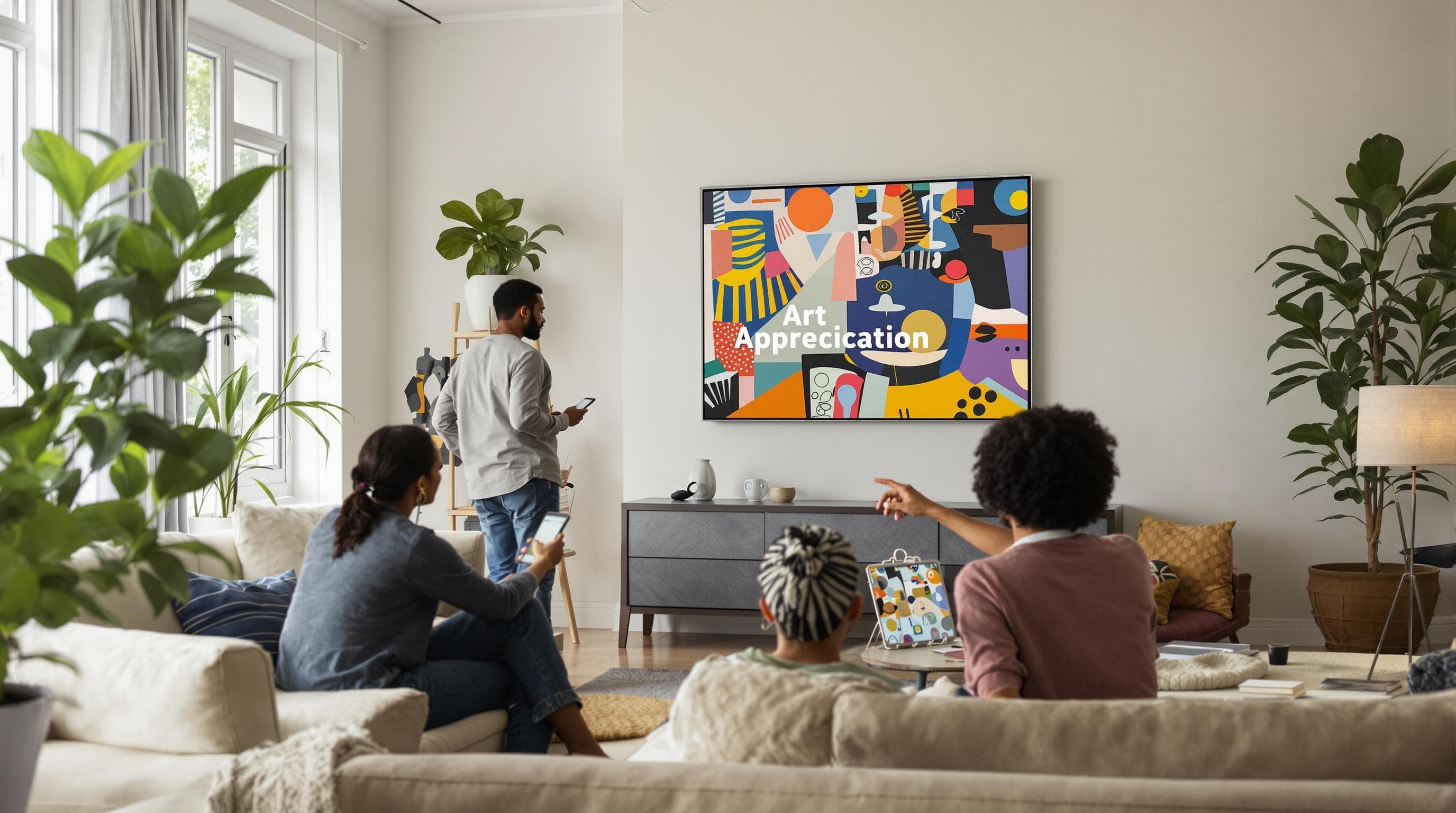
Art appreciation might sound like something only experts and gallery owners truly get, but today it is turning into something far more personal and accessible. Shockingly, virtual museum tours and online galleries have opened up global art collections to millions, breaking down barriers for both artists and collectors. Instead of hunting for approval in academic circles, more people are discovering that true art appreciation starts the moment you trust your own instincts and let your emotions guide your next favorite piece.
Table of Contents
- What Art Appreciation Basics Mean Today
- How To Choose Art For Any Space
- Understanding Modern And Abstract Art Styles
- Supporting Independent Artists In 2025
Quick Summary
| Takeaway | Explanation |
|---|---|
| Embrace a Personal Journey in Art Appreciation | Art appreciation is a dynamic process that involves curiosity, open-mindedness, and personal interpretation, allowing for diverse engagement with artwork beyond traditional aesthetics. |
| Choose Art that Reflects Your Space and Emotion | Selecting artwork should align with the atmosphere and design of your space; large pieces can make bold statements, while smaller works suit intimate settings, emphasizing personal connections. |
| Support Independent Artists Through Digital Platforms | Engaging with independent artists today means using digital tools for direct purchases and promoting their work online, fostering a deeper connection and contributing to cultural diversity. |
What Art Appreciation Basics Mean Today
Art appreciation has transformed dramatically in the digital age, moving far beyond traditional museum walls and academic circles. Today, understanding art is about connecting with visual narratives, exploring cultural contexts, and developing a personal relationship with creative expressions.
Understanding the Modern Art Appreciation Landscape
Modern art appreciation is no longer a passive experience restricted to experts. Research from Thompson Rivers University reveals that art appreciation now encompasses a broader, more inclusive approach to understanding visual language. It involves developing critical thinking skills that allow individuals to interpret, analyze, and connect with artworks on multiple levels.
The core of contemporary art appreciation lies in understanding visual elements and cultural contexts. This means looking beyond aesthetic beauty and exploring the deeper meanings, historical backgrounds, and emotional resonances embedded in artistic works. Artists communicate complex ideas through visual languages, and appreciating art means decoding these sophisticated messages.
Elements of Contemporary Art Appreciation
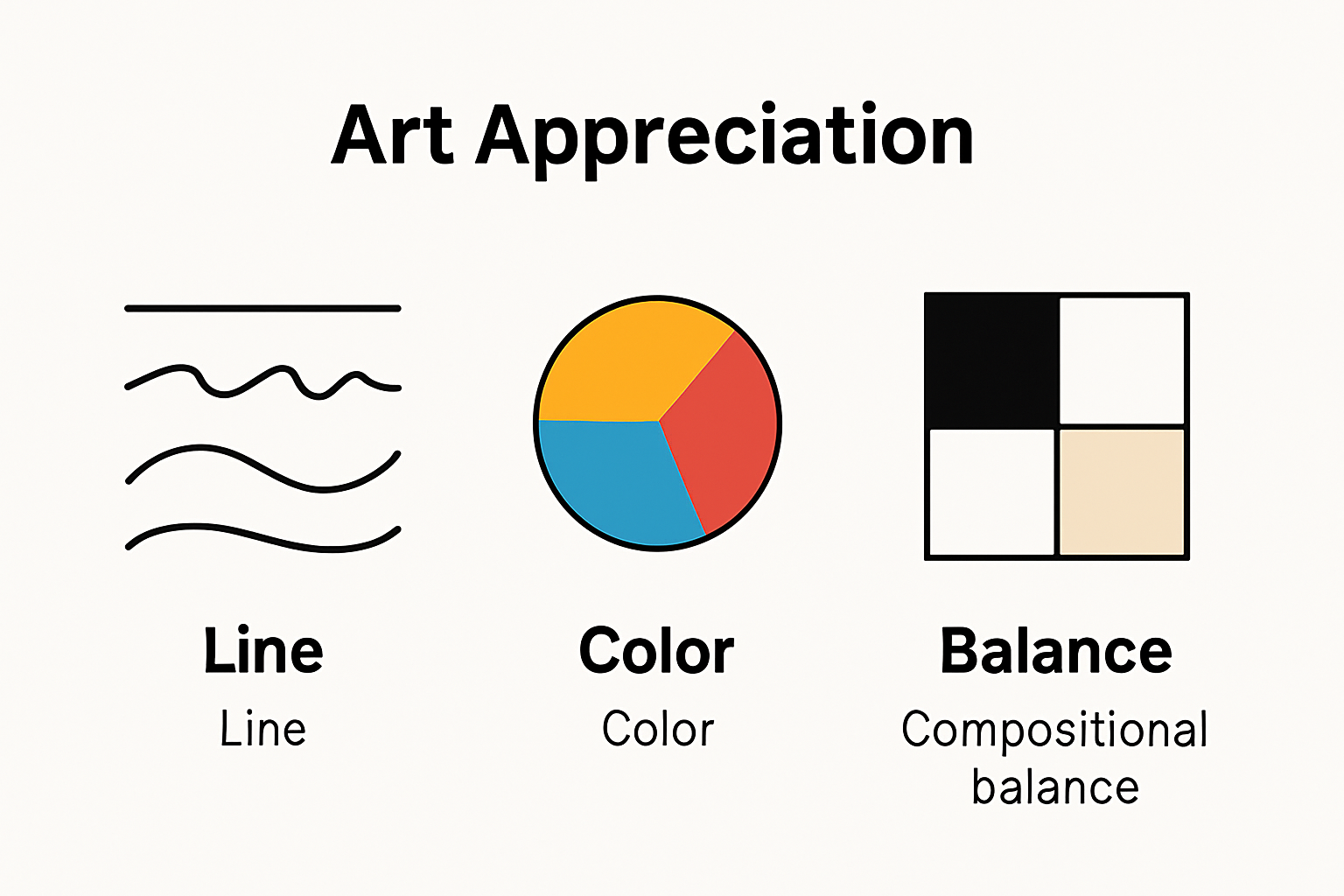
According to the Art Appreciation Open Educational Resource, art appreciation fundamentally involves understanding key artistic elements:
- Line and Form: Analyzing how artists use lines to create movement, define shapes, and communicate emotions
- Color Theory: Understanding how color choices impact perception and convey symbolic meanings
- Compositional Balance: Recognizing how artists arrange visual elements to create harmony or intentional tension
Beyond technical analysis, modern art appreciation celebrates individual interpretation. Each viewer brings unique experiences and perspectives, making art engagement a deeply personal and transformative process. This approach democratizes art understanding, removing intimidating barriers that once made art seem exclusive or inaccessible.
Developing Personal Art Appreciation Skills
Developing art appreciation skills requires curiosity, open-mindedness, and consistent exposure. Start by exploring diverse art forms without judgment. Ask yourself questions about the artwork’s potential meanings, the artist’s intentions, and your emotional responses. Attend local exhibitions, engage with online art communities, and read about different artistic movements.
Technology has revolutionized art appreciation, providing unprecedented access to global art collections. Virtual museum tours, online galleries, and digital platforms allow enthusiasts to explore artwork from different cultures and historical periods without geographical limitations. This accessibility has expanded art appreciation from a niche interest to a globally shared experience.
Remember that art appreciation is a journey of continuous learning. There are no absolute right or wrong interpretations, only nuanced perspectives that contribute to a richer understanding of human creativity and expression.
To make it easier to understand the main elements that contribute to contemporary art appreciation, see the following summary table:
| Element | Description |
|---|---|
| Line and Form | Use of lines to create movement, define shapes, and communicate emotions |
| Color Theory | Color choices and their impact on perception and symbolic meaning |
| Compositional Balance | Arrangement of elements to create harmony or visual tension |
| Personal Interpretation | Individual viewer’s unique experiences and perspectives |
| Cultural Context | Understanding the background and meaning embedded in the artwork |
| Emotional Resonance | Emotional response and transformation experienced by the viewer |
How to Choose Art for Any Space
Selecting artwork that transforms a space requires more than just picking something visually appealing. It involves understanding the intricate relationship between art, interior design, and personal expression.
Understanding Space and Art Compatibility
According to Wonderwall Studio, choosing art is about creating harmony between the artwork and its environment. This means considering room style, color palette, and spatial dynamics. A piece that works beautifully in a minimalist living room might feel out of place in a rustic home office.
Key considerations include room architecture, existing color schemes, and the emotional atmosphere you want to create. Large, bold pieces can make a dramatic statement in spacious areas, while smaller, more intricate works might be perfect for intimate spaces. EDEN Gallery recommends paying special attention to lighting, which can dramatically transform how an artwork is perceived.
Art Selection Strategies for Different Spaces
Each room presents unique challenges and opportunities for art placement. In living areas, consider pieces that spark conversation and reflect your personality. Bedrooms might benefit from calmer, more meditative artworks that promote relaxation. Home offices could feature motivational or intellectually stimulating pieces.
Size matters significantly. A general rule is to choose artwork that covers approximately two-thirds to three-quarters of the wall space above furniture. This creates visual balance without overwhelming the room. For those unsure about sizing, check out our guide on selecting art for living room walls for more detailed insights.
Personal Expression and Emotional Connection
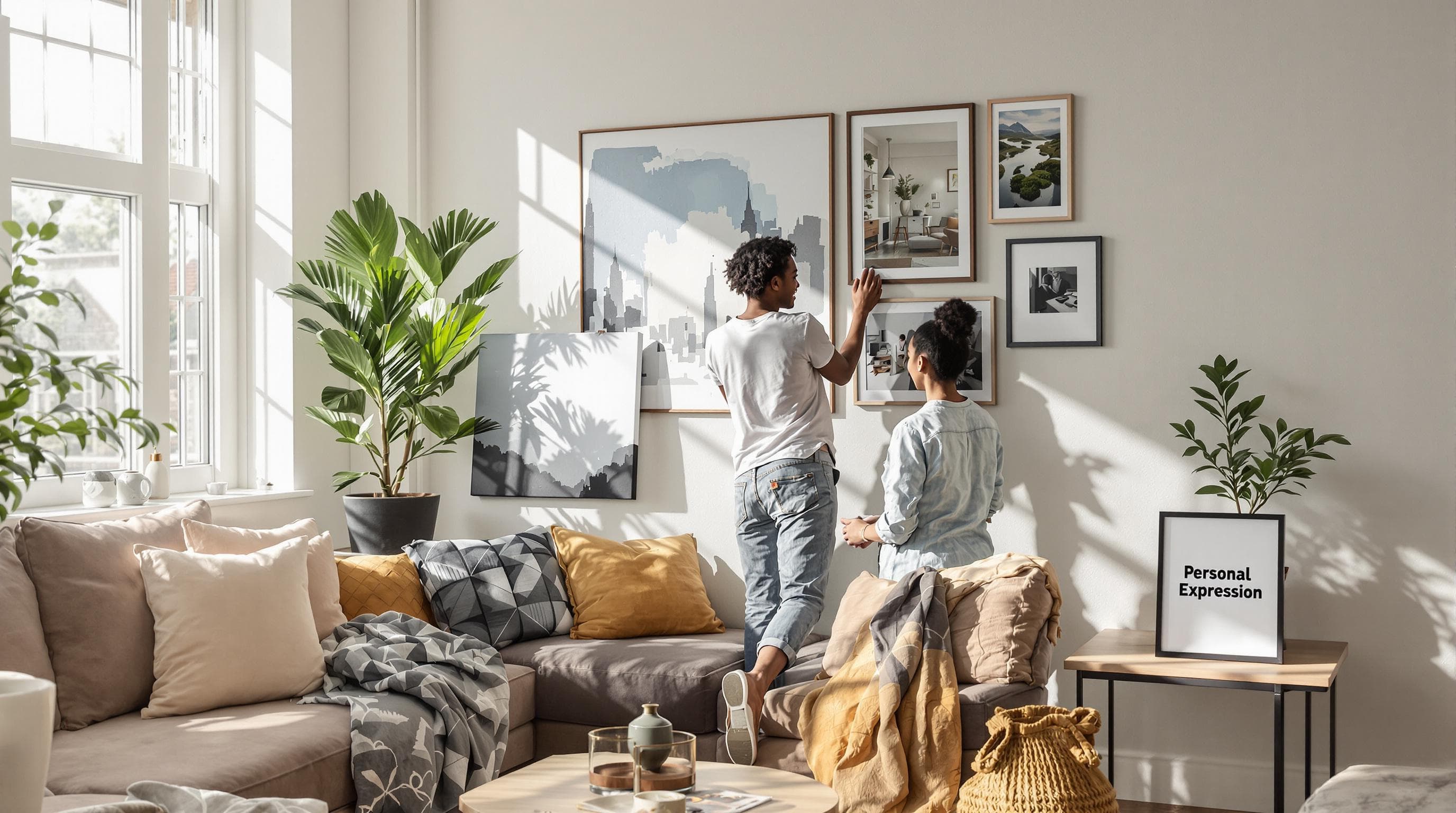
Beyond technical considerations, art selection is deeply personal. The most impactful pieces resonate emotionally and tell a story. Don’t just choose art to fill space choose art that speaks to you. Whether it’s a canvas that reminds you of a cherished memory, an abstract piece that captures a mood, or a print that represents your aspirations, the best art reflects your inner world.
Consider creating visual dialogues between artworks. Mix different styles, mediums, and sizes to create depth and interest. A gallery wall can combine personal photographs, abstract prints, and traditional paintings to create a unique narrative.
Remember that art is not static. As your life evolves, so can your art collection. Start with pieces that genuinely move you, and don’t be afraid to rotate artwork periodically. This keeps your space dynamic and allows different pieces to shine at different times.
Choosing art is an adventure of self-discovery. It’s about creating environments that inspire, comfort, and reflect your unique journey.
Here’s a table summarizing recommended art selection strategies for different home spaces as described above:
| Space | Art Type/Style | Purpose/Effect |
|---|---|---|
| Living Room | Conversation pieces, bold styles | Spark conversation, reflect personality |
| Bedroom | Calmer, meditative, tranquil | Promote relaxation, create a restful atmosphere |
| Home Office | Motivational, stimulating | Inspire motivation, support focus and intellectual work |
| Hallways | Smaller pieces, cohesive themes | Create visual interest, set transitional mood |
| Entryway | Statement art | Set tone for home, make first impression |
Understanding Modern and Abstract Art Styles
Modern and abstract art represent revolutionary approaches to visual expression that challenge traditional representation and invite viewers to experience art beyond literal interpretations. These artistic styles emerged as powerful means of communicating complex emotions, ideas, and societal transformations.
The Evolution of Abstract Art
According to EBSCO Research Starters, abstract art emerged in the early 20th century as a radical departure from representational forms and traditional realism. Artists began exploring ways to communicate through colors, shapes, and lines that evoke emotions and concepts unrelated to material reality.
The National Museum of Women in the Arts distinguishes between two key types of non-representational art: abstract art (based on real-world elements but simplified or distorted) and non-objective art (completely detached from recognizable objects). This nuanced understanding reveals the complexity and intentionality behind abstract artistic expressions.
Key Characteristics of Modern Art Styles
Modern art styles are characterized by their willingness to break conventional artistic rules. Encyclopaedia Britannica highlights how modern art movements like Impressionism, Cubism, and Abstract Expressionism reflect profound social, economic, and intellectual shifts. These styles prioritize emotional impact and conceptual communication over literal representation.
Key modern art movements include:
- Cubism: Fragmenting and reconstructing subjects from multiple perspectives
- Abstract Expressionism: Emphasizing spontaneous, intuitive creation
- Minimalism: Reducing art to its most essential elements
These styles challenge viewers to engage more deeply with artwork, moving beyond passive observation to active interpretation. Each movement offers a unique lens for understanding human experience and creativity.
Appreciating the Complexity of Abstract Art
Appreciating abstract and modern art requires an open mind and willingness to move beyond traditional aesthetic expectations. Instead of seeking literal representations, viewers are invited to explore emotional landscapes, conceptual narratives, and visual metaphors.
Artists like Wassily Kandinsky, Piet Mondrian, and Kazimir Malevich pioneered approaches that transformed art from a representational medium to a platform for exploring pure visual language. Their work demonstrates how color, form, and composition can communicate complex ideas and emotions without relying on recognizable imagery.
To truly appreciate modern and abstract art, develop your visual literacy. Observe how colors interact, how shapes create tension or harmony, and how the artwork makes you feel. Want to explore contemporary art trends deeper? Each piece tells a story not through words, but through visual elements that speak directly to the viewer’s subconscious.
Remember that there are no universal “correct” interpretations in abstract art. Your personal response is what makes the artwork meaningful. Embrace the ambiguity, let go of the need for literal understanding, and allow yourself to experience art as an emotional and intellectual journey.
Supporting Independent Artists in 2025
The landscape of art support has dramatically transformed in recent years, creating unprecedented opportunities for independent artists to connect directly with collectors, enthusiasts, and supporters worldwide. Supporting independent artists is no longer just a charitable act but a meaningful way to contribute to cultural diversity and creative innovation.
The Digital Era of Artist Support
In 2025, supporting independent artists goes beyond traditional gallery systems. Digital platforms have revolutionized how artists showcase and sell their work, allowing direct connections between creators and art lovers. Online marketplaces, social media platforms, and dedicated art websites have democratized art accessibility, enabling artists to reach global audiences without traditional gatekeeping.
Key strategies for supporting independent artists include:
- Direct Purchases: Buying artwork directly from artists
- Social Media Engagement: Following, sharing, and promoting their work
- Commissioning Custom Pieces: Encouraging personalized artistic creation
Economic and Cultural Impact of Supporting Independent Artists
Supporting independent artists is more than a transactional experience. It represents an investment in creative ecosystems and cultural expression. When you purchase artwork from an independent artist, you’re providing direct financial support that enables continued creative development. Learn more about the transformative power of art in personal spaces.
Independent artists often bring unique perspectives that challenge conventional artistic narratives. They represent diverse backgrounds, experimental techniques, and innovative approaches that enrich our collective cultural landscape. By supporting them, you’re not just acquiring art but participating in a broader dialogue of creative expression.
Practical Ways to Support Independent Artists
Beyond financial transactions, supporting independent artists involves creating meaningful connections. Attend local art shows, participate in community art events, and engage with artists’ stories. Many artists use platforms like Instagram, Patreon, and personal websites to share their creative journeys.
Consider these approaches to meaningful artist support:
- Follow artists on social media and genuinely engage with their content
- Share their work with your network
- Provide constructive feedback and genuine appreciation
- Purchase artwork within your budget
- Commission pieces for special occasions
Technology has made artist support more accessible than ever. Virtual studio tours, online workshops, and digital portfolios allow art enthusiasts to connect with creators globally. This interconnectedness breaks down geographical barriers and creates a more inclusive art ecosystem.
Remember that every art purchase, every share, and every positive interaction contributes to an artist’s ability to continue creating. Your support doesn’t just sustain individual artists it helps maintain the vibrant, diverse artistic landscape that enriches our collective human experience.
Frequently Asked Questions
What is art appreciation?
Art appreciation is the understanding and enjoyment of art through exploring its elements and cultural context, allowing individuals to connect emotionally with artworks.
How do I choose the right art for my space?
To choose the right art for your space, consider the room’s style, color palette, and the emotional atmosphere you want to create. Aim for harmony between the artwork and the environment.
What are the key elements of contemporary art appreciation?
The key elements of contemporary art appreciation include line and form, color theory, compositional balance, personal interpretation, cultural context, and emotional resonance.
How can I support independent artists in 2025?
You can support independent artists by purchasing artworks directly, engaging with their work on social media, commissioning custom pieces, and attending local art events.
Bring Meaningful Art Into Your Space Today
Are you looking to turn your appreciation of art into a unique home environment that really reflects your personality and taste? If you found value in learning about art selection strategies and personal expression in our guide, experience the impact for yourself by exploring Marta Ellie’s Art Gallery Opening Night Wall Art collection. Each artwork is crafted to help you celebrate milestones and elevate your decor so your space tells your story, not just fills a wall.
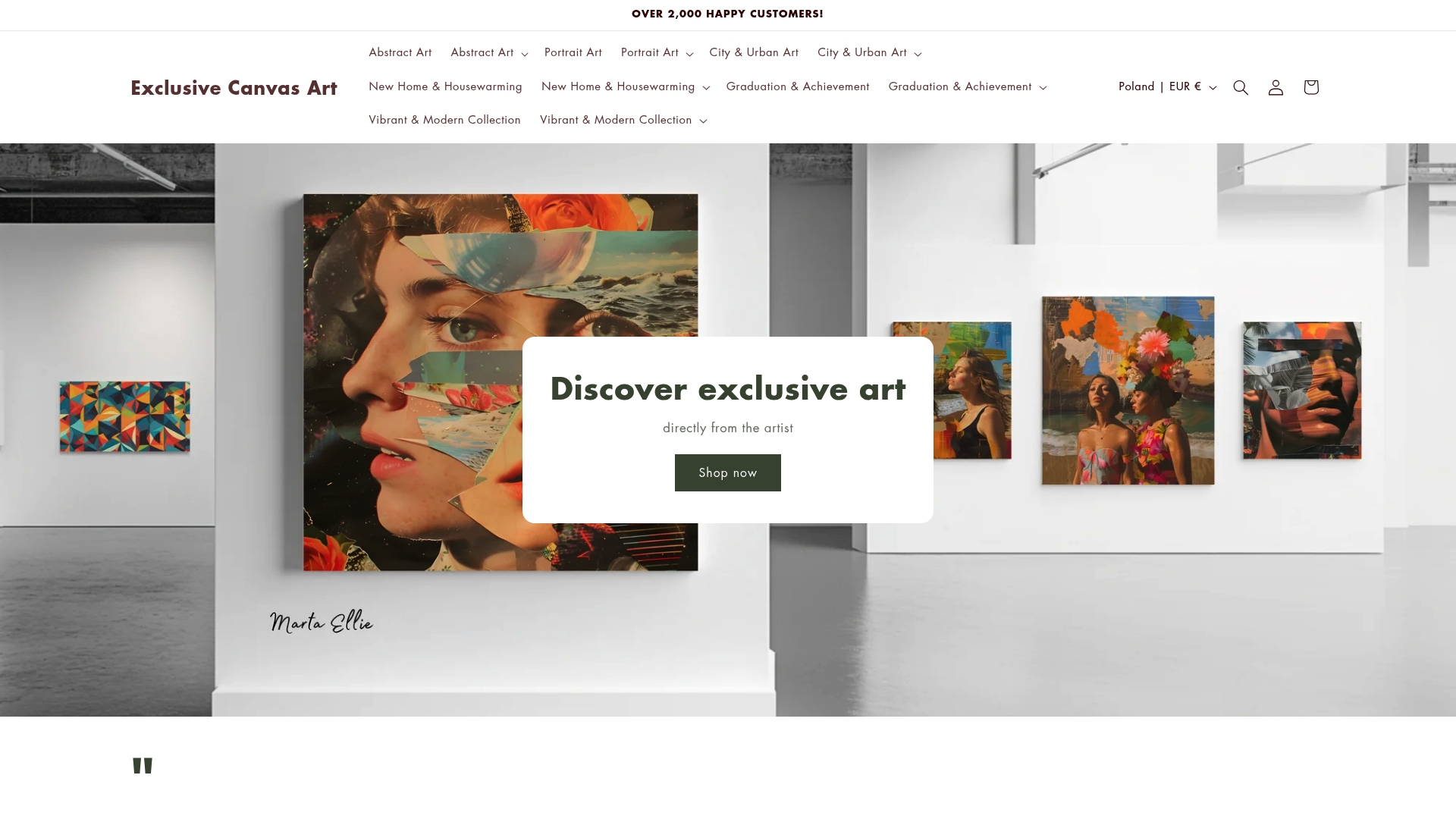
Take the next step and visit Marta Ellie’s website. Browse detailed product listings and get inspired by canvas art designed for collectors and decorators who want more than ordinary wall decor. Give your surroundings the emotional connection and contemporary artistry you have just discovered. Shop now to turn your space into an expression of you.
Recommended
- Contemporary vs Modern Art: Guide for Collectors & Decorators 2025 – Exclusive Canvas Art
- Types of Art Prints: Your Guide for Collectors and Decorators 2025 – Exclusive Canvas Art
- What Makes Art High Quality: Guide for Collectors & Decorators 2025 – Exclusive Canvas Art
- How to Choose Art for Living Room Walls: 2025 Guide – Exclusive Canvas Art
- Famous South African Artists: 2025 Guide for Collectors & Decorators - Art-Online
- Acrylic Painting: 5 Incredible Benefits - Blue Pea Online Market